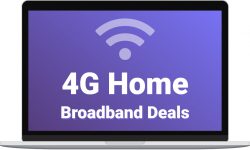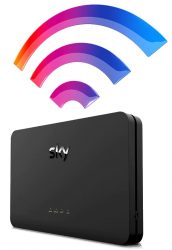Learn about the different types of home broadband in the UK and compare different broadband internet service providers (ISPs).
 In the UK, there are multiple different technologies used for home broadband including ADSL, fibre, cable, 4G and 5G. There are also numerous different ISPs you can choose from, with a range of different home broadband plans using different underlying technologies.
In the UK, there are multiple different technologies used for home broadband including ADSL, fibre, cable, 4G and 5G. There are also numerous different ISPs you can choose from, with a range of different home broadband plans using different underlying technologies.
In this section, we’ll explain the different types of home broadband in the UK, the pros & cons of each broadband technology and where you’re currently able to get it. We’ll also compare different broadband ISPs across each type of home broadband technology.
| Which ISPs provide home broadband in the UK? | The following internet service providers currently offer home broadband in the UK:
|
|---|---|
| What are the different types of home broadband? | There are seven different types of home broadband technology currently used in the UK:
|
| Which broadband technology delivers the best speed and reliability? | The gold standard for broadband speed and reliability is provided by full fibre technology (also known as fibre-to-the-home). Today’s full fibre technology offers 1Gbit/s download and upload speed, with the possibility of faster speeds in the future with hardware improvements. It is less susceptible to interference and slowdowns compared to other broadband technology. |
| How widely available are the different types of home broadband? | The availability of different home broadband technologies in the UK are as follows:
|
| How does fixed-line broadband compare to wireless broadband? | Traditionally, most home broadband services in the UK have used fixed-line technology where either a phone line or cable runs to your home. This works well for many people though it’s often slow to set up and not that flexible as you’re tied in to a contract. In certain locations, fixed-line broadband can also be slow (e.g. in rural areas or households without access to fibre broadband).
As an alternative to fixed-line broadband, 4G or 5G wireless broadband can be a good option. It’s normally more flexible than fixed-line broadband and may give you better performance in some areas (e.g. in rural areas without slow fixed-line broadband). |
















Your Comments
We'd love to hear your thoughts and any questions you may have. You can add your own comment here.